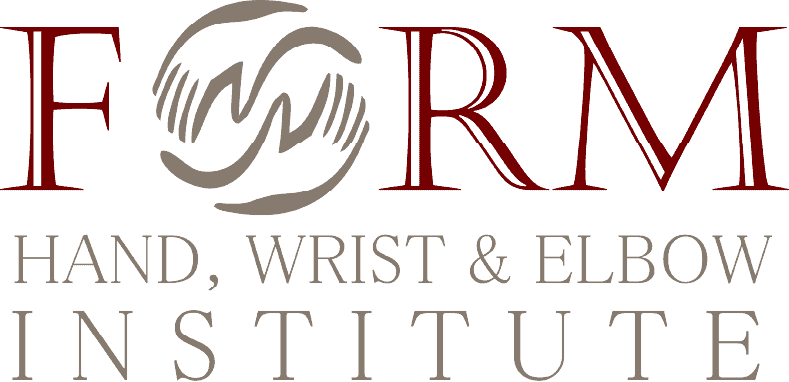Your hands do most of your work, from writing, gripping things, and holding a pen, mug, and door handles, in short, to everything in life. We take our hands for granted, not realizing how dependent we are on them to perform every activity. The hands aid in our tasks and make our lives much more accessible. Unfortunately, we often don’t pay much attention to signs our hands are giving out. Therefore, it escalates the problem further and makes things worse for us overall. Symptoms like numbness and tingling in the hand or ring and little finger, hand pain, weaker grip, and aching pain on the side of the elbow are common. However, these signs can mimic other conditions, such as a golfer’s elbow. Do not sit over or assume but reach out to FORM Hand, Wrist & Elbow as our hand surgeon and therapists can thoroughly examine your hand, providing a treatment plan for you.
How Does Cubital Tunnel Syndrome Happen?
Ulnar nerve passes through the cubital tunnel (muscle, ligament, bone) on the inside of the elbow becomes inflamed, swollen, or irritated, causing cubital tunnel syndrome. It may often cause pain and feel like you hit your funny bone (where the nerve is unusually exposed). Our hands do a lot of work for us, but how can one get cubital tunnel syndrome? Most commonly, it is when you bend your elbow repeatedly due to the nature of work, such as pulling, reaching, or lifting. If leaning a lot on the elbow is common or in case of injury to the area, it might be cubital tunnel syndrome.
Is Cubital Tunnel Syndrome Common?
Cubital tunnel syndrome is also a common peripheral nerve compression disorder after carpal tunnel syndrome. However, it may be rare in general, as around 25 cases for every 100,000 people may occur yearly. Your job may significantly impact the condition, or if you often talk on the phone without hands-free. Certain conditions can also put you at a higher risk, like rheumatoid arthritis, thyroid disease, or obesity.
How FORM Hand, Wrist & Elbow Can Help You?
During the patient’s first consultation, we perform physical exam along with questions about medical history, family history, signs, or symptoms. Then, we will perform imaging tests available at the facility or recommend other facilities depending on the requirement. Some of the most common are electromyography or nerve conduction studies that can help diagnose the condition. Then, based on the diagnosis, we will create a treatment plan. From applying splints or braces to block your elbow from movement and further prevent any discomfort and pain to therapy, where our hand therapists will ensure you return to your routine. We have got you covered to the point that, if need be, we perform outpatient surgeries depending on the patient’s case. Our comprehensive treatment plan ensures that the patient recovers and gets back to what they enjoy most.
So don’t wait; schedule an appointment with FORM Hand, Wrist & Elbow at (510) 480-3700 and discover your treatment options.


